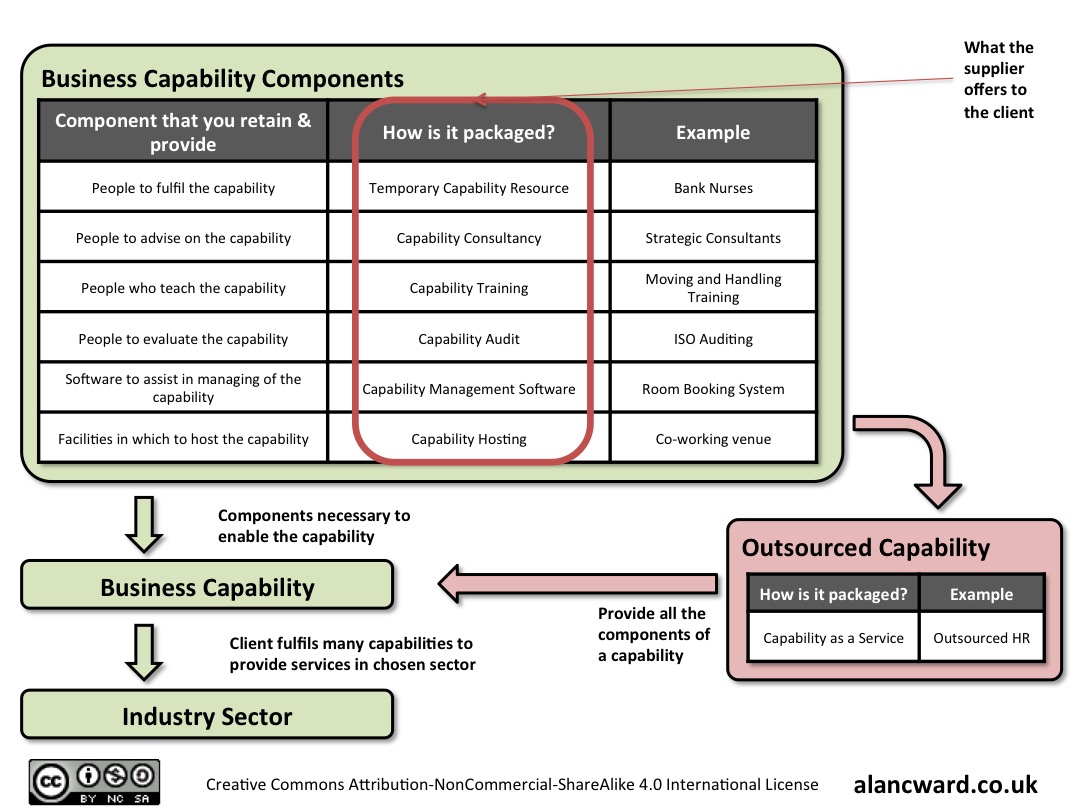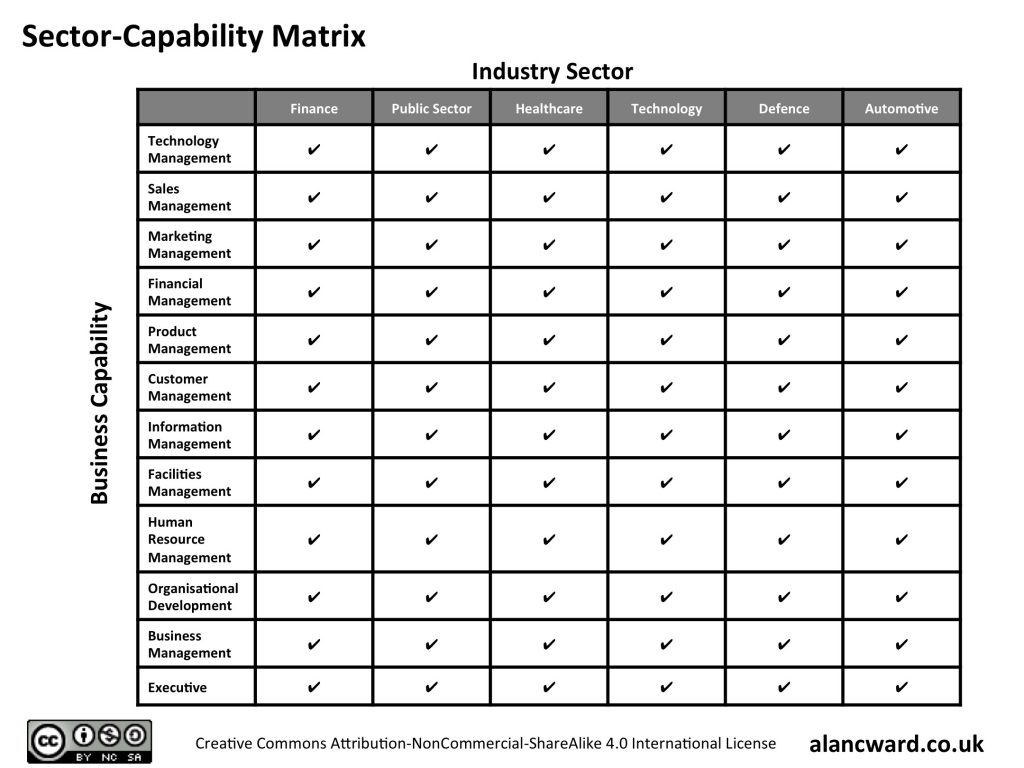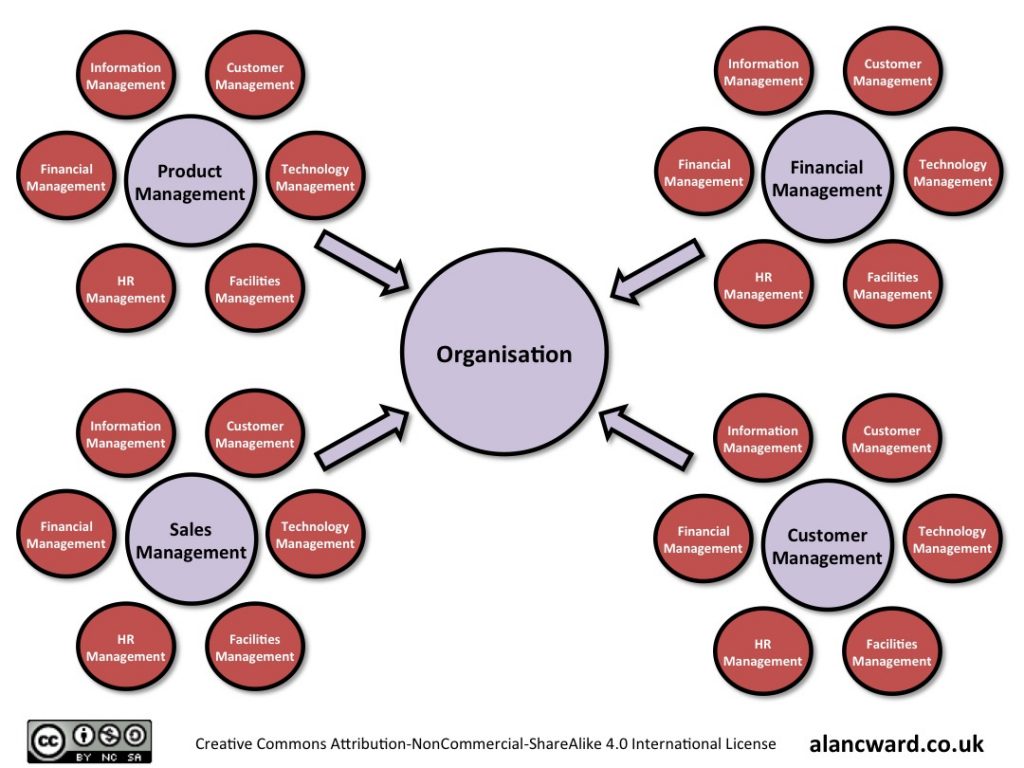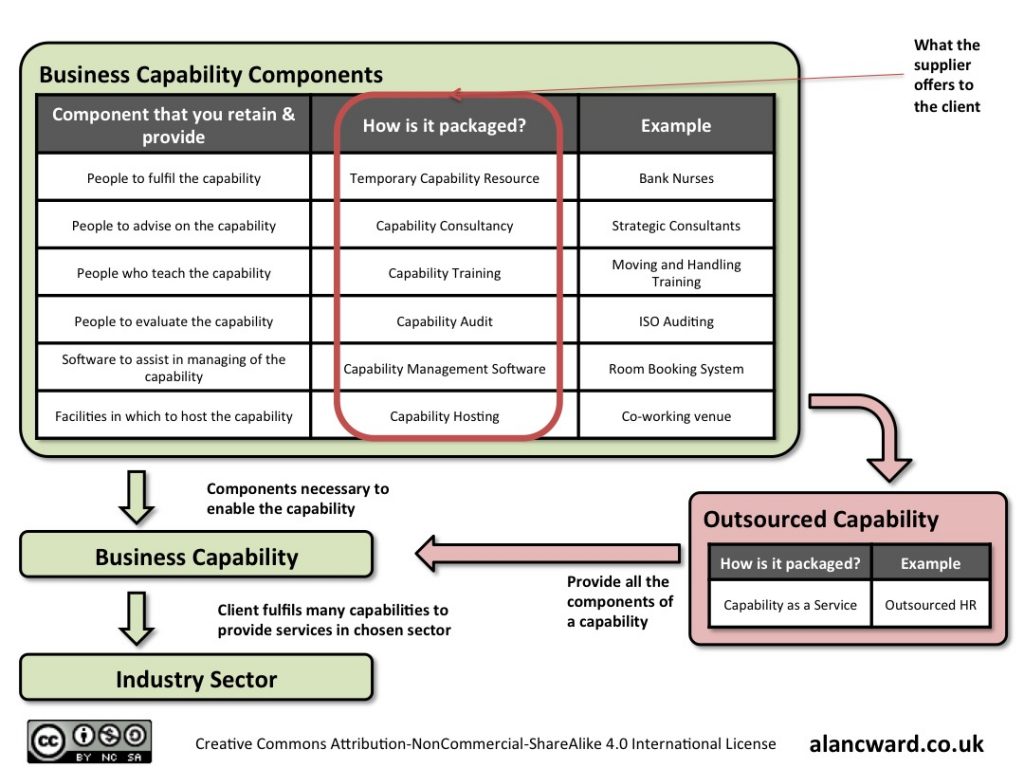Pardon, which sector? – Xtech and Why I’m Fed Up with Tech part 3

I’ve written previously about the issues with xtech that arise from applying -tech to the end of a sector such as healthtech, fintech, etc. And I introduced (and revoked) the idea of a -value suffix. Earlier this week, a conversation earlier made me think more about this and I want to explore the concepts of Business Capability and Capability Components further.
The entrepreneur mentioned that he was in the finance sector. On questioning further, the offer was a financial app for any sector. There’s a big difference and we can explore that difference in a matrix between capabilities and sectors.
At first glance, that looks like a contender for the world’s least useful matrix. On second glance, I’d also probably agree with my first impression. Not only does every cell in the matrix have a tick in it (so there’s no differentiation), it doesn’t include a full list of Business Capabilities. Instead, there’s sufficient to explore the concept for our purposes.
Let’s take it a bit further and use it to explore an issue I see with companies, mostly those in a supply position. If you’re selling software into healthcare, then are you a tech company or a healthcare company? It helps to phrase the position in terms of the capability you provide or improve in your target sector. So in that case, you’d be providing technology into healthcare. As we can see from the possibly-useless matrix above, we’d expect all sectors to require all business capabilities.
But I find more companies are confused if they’re providing software into finance. Suddenly they’re in the financial sector. True, the selling into the financial sector, by providing services into it, but they’re still a tech company.
This becomes more obvious when the software company that originally sold to Finance sector then also repackages the product to sell into Healthcare.
This is a simplistic view of the concepts of horizontal-integration or vertical-distribution; you can provide:
- more services into your industry vertical, e.g. provide tech and financial management into healthcare or
- the same capability into many sectors, e.g. provide financial management into healthcare and education or expand in both directions with
- a mix of capabilities across sectors
Another Perspective
However, it’s more complicated than that. Each of the capabilities listed in the only-slightly-useful Sector Capability Matrix features at Level 1 or Level 2 (depending on where you start counting from the top). From a standard business architecture practice, each of the capabilities can be decomposed further, for instance, within sales management, we’d expect to see sales analytics, sales commissions, sales execution (the actual doing the selling), sales performance management, etc. Different organisations have a different angle on how they decompose the lower level capabilities. The main concept to take away is that we can take a conceptual capability and split it into more granular capabilities.
Instead, we are going to decompose them in a different manner. Most of the capabilities can be viewed as mini-businesses in their own right, so we’d expect to see a microcosm of capabilities within them.
Whereas the traditional business architecture view is based on functional decomposition (in that the capabilities are decomposing into more specialist capabilities), we’re going to decompose into enabling components.
For each of those capabilities that support an organisation, there are several components that are required to turn those capabilities into reality. In the same way that the organisation requires capabilities to function, the capabilities themselves require the components to be able to deliver. These components are capabilities at the next level down, to some extent mirroring the capabilities of the organisation as whole. For instance, most capabilities require people who can do the job, people who can manage, technology, etc. Hence the concept of capabilities as mini-businesses in their own right and that’s what we see in Figure 2 above. Each capability is supported by components. Note that Figure 2 does not include all capabilities or components, just enough to give an indication of what we’re discussing here.
This becomes significant when we consider the role of the components in a B2B context. This article started with a founder’s confusion over the sector, we then took a route through exploring capabilities. Now I want us to focus on the components.
It’s that middle column, with the red border, that we should consider when creating a new business. For B2B, we provide Capability Components to a client business.
If your client is a car dealership, they’re in the automotive sector.
The car dealership will have many Capabilities, e.g. Sales Management, HR Management, Organisational Development, etc.
If you are a company selling sales training, then your selling into two capabilities. You’re improving their Sales Management capability, but providing services into their Organisational Development capability. And that’s why it’s confusing. We have to remember, not only the sector that the client is in, but the interplay of the Capability Components we offer with the client’s Capabilities.
A further angle is that if you have sufficient capability components, you can provide the whole Capability to your client business, e.g. fully outsourced HR services.
Conclusion
We need to be careful about how we define our sector. Depending on the context, your audience will interpret the sector differently. A lot of that will also depend on what you meaning you intend to convey when you say your company is in a given sector.
The key item to remember is that the client operates in a Sector and that we offer Capability Components that interact (e.g. support, improve, provide) with the client’s Capabilities.





Recent Comments